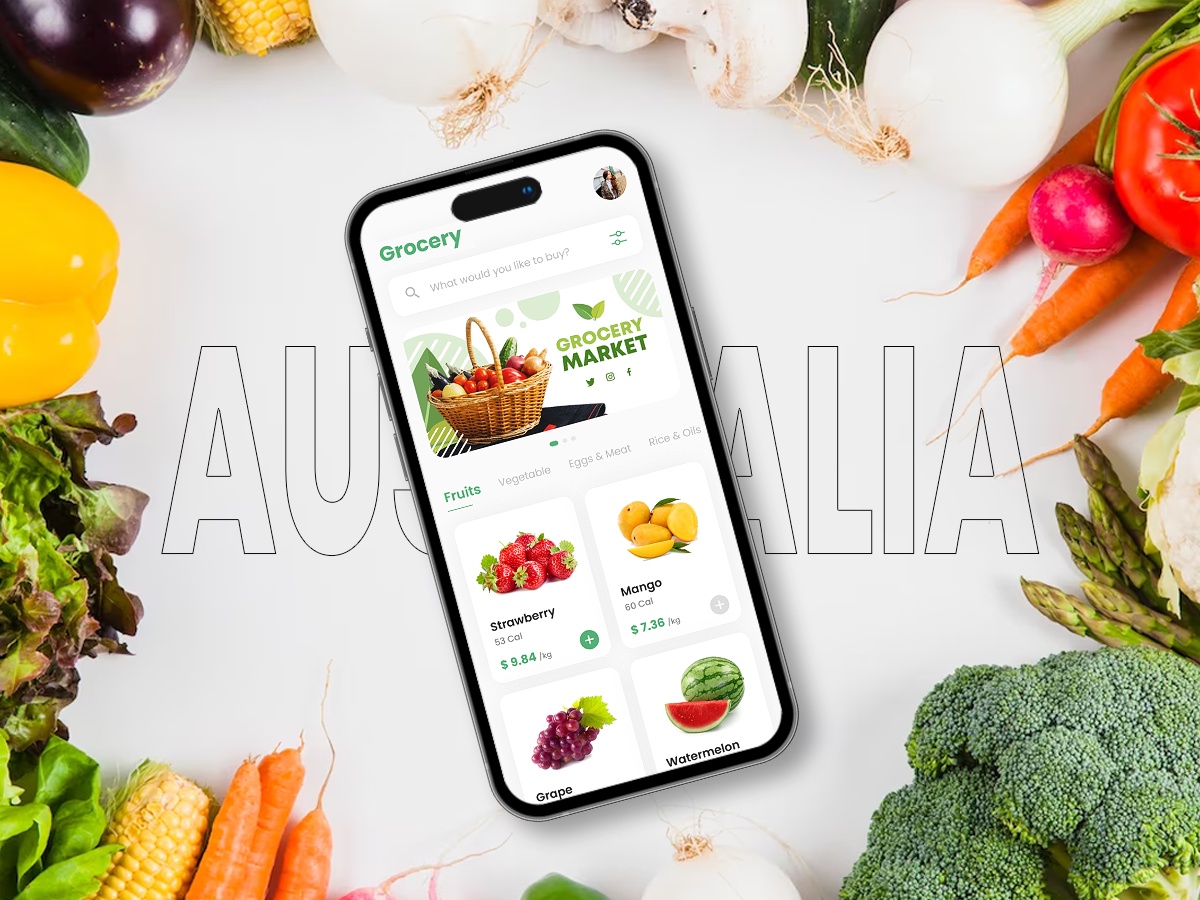Developing a grocery app in Australia requires careful planning and execution to ensure its success and user-friendliness. Here are the steps you can follow to create a successful grocery app:
* Market Research:
Start by conducting thorough market research to understand the current trends and demands in the grocery industry in Australia. Identify your target audience, their preferences, and their pain points. Analyze your competitors' apps to learn from their strengths and weaknesses.
* Define Your Unique Selling Proposition (USP):
Differentiate your grocery app by offering unique features or services that set it apart from existing apps. This could include personalized recommendations, loyalty programs, or exclusive partnerships with local suppliers.
* Design and User Experience:
Create an intuitive and visually appealing user interface (UI) that enhances the shopping experience. Ensure the app is easy to navigate, with a seamless checkout process and various payment options.
* Partner with Local Grocery Stores and Suppliers:
Collaborate with local grocery stores, supermarkets, and suppliers to source a wide range of products for your app. Building partnerships will also help in securing timely deliveries and better pricing.
* Backend Development:
Work on the backend development of the app, including database management, inventory tracking, order processing, and payment integration. Consider using secure and reliable technology to handle user data and transactions.
* Mobile App Development:
Develop the grocery app for both iOS and Android platforms, making sure it is responsive and compatible with various devices. Consider employing experienced app developers or outsourcing the development to a reputable agency.
* Implement Real-time Inventory Management:
Ensure that your app's inventory is updated in real-time to avoid frustrating customers with out-of-stock products. Implement smart inventory management systems that automatically update stock levels.
* Secure Payment Gateway:
Integrate a secure payment gateway that supports various payment methods, including credit cards, mobile wallets, and cash-on-delivery. Ensure that customer payment information is protected with robust encryption.
* Testing and Quality Assurance:
Thoroughly test the app before launch to identify and fix any bugs or issues. Conduct beta testing with a select group of users to gather feedback and make necessary improvements.
* Launch and Marketing:
Once the app is ready, launch it on the app stores and start marketing campaigns to attract users. Utilize social media, influencer marketing, and other advertising channels to create awareness and drive downloads.
* Customer Support and Feedback:
Provide excellent customer support to address any queries or concerns. Encourage users to leave feedback and reviews to improve the app's performance and user satisfaction.
* Continuous Improvement:
Monitor app performance and user engagement regularly. Analyze data to identify areas for improvement and continuously update the app with new features and enhancements.
Remember that developing a successful grocery app is an ongoing process. Stay up-to-date with industry trends and customer needs to keep your app relevant and competitive in the market.
Want to know which grocery apps are more popular in Australia? If yes, then read this article in detail:


No comments yet